Understanding What is the Chinese National Dish: Cultural Significance and Variations
When people think of Chinese cuisine, many might wonder: what is the Chinese national dish? While the country is rich with diverse culinary traditions, the dish most commonly recognized as the national dish is Peking Duck. This iconic dish hails from Beijing and has deep cultural significance that transcends mere food; it represents a blend of China’s history, artistry, and culinary techniques.
Peking Duck: The Essence of Chinese Cuisine
Peking Duck is renowned for its crispy skin and tender meat. The preparation involves a unique roasting process that results in a delightful contrast in texture. Yes, the method includes inflating the duck to separate the skin from the meat, which allows for the skin to become incredibly crispy during cooking. Here’s what makes Peking Duck special:
- History: This dish dates back to the Imperial Era, over 600 years ago.
- Technique: It requires specific preparation methods that have been perfected over generations.
- Presentation: Traditionally served with thin pancakes, hoisin sauce, and a mix of scallions.
Variations Across China
While Peking Duck stands out, the idea of a “national dish” in China can be somewhat subjective due to the country’s vast regional diversity. Each province showcases its own flavors and preparations. Here are a few other notable dishes that also carry significant cultural weight:
- Mapo Tofu: Originating from Sichuan province, this spicy tofu dish is famous for its bold flavors.
- Dim Sum: A style of eating that features a variety of small plates, popular especially in Guangdong province.
- Kung Pao Chicken: A stir-fried dish from Sichuan known for its rich flavors, featuring chicken, peanuts, and vegetables.
The Cultural Significance of Peking Duck
Peking Duck goes beyond being just a meal; it is a symbol of celebration in Chinese culture. This dish is often served during major festivities and occasions, such as weddings or Lunar New Year celebrations. Here are a few reasons why it’s culturally significant:
- Symbol of Hospitality: Serving Peking Duck signifies warmth and generosity towards guests.
- Art Form: The meticulous presentation and preparation are regarded as an art, showcasing culinary excellence.
- Gathering: It brings families and friends together, making dining a communal experience.
A Glimpse into Peking Duck Preparation
The meticulous preparation of Peking Duck is intriguing. Here’s a brief overview of the steps involved:
- The duck is air-dried to crisp the skin.
- It is coated with a special marinade.
- The duck is roasted in a wood-fired oven, which enhances the flavors.
- Slices of the duck are served with pancakes and garnishes.
This elaborate preparation demonstrates the dedication and skill that chefs put into their craft, highlighting why Peking Duck is considered a national treasure.
How to Enjoy Peking Duck
Enjoying Peking Duck can be an experience itself. Here’s how you can relish this dish:
- Take a pancake and spread a dab of hoisin sauce.
- Add slices of duck and a few scallions.
- Wrap it up and enjoy the burst of flavors!
Eating Peking Duck is not just about the food; it’s a full sensory experience. The scents, textures, and flavors come together to create something truly memorable.
Where to Try Authentic Peking Duck
If you’re eager to taste authentic Peking Duck, look for reputable restaurants known for their expertise. Here are some popular options:
| Restaurant | Location | Website |
|---|---|---|
| Quanjude Peking Duck | Beijing | quanjude.com |
| Da Dong Roast Duck | Beijing | dadongroastduck.com |
| Duck de Chine | Beijing | duckdechine.com |
In exploring what the Chinese national dish is, it becomes clear that Peking Duck not only satisfies the palate but also connects you to centuries of history and culture. Whether you’re dining in China or a local Chinese restaurant, experiencing this dish allows you to taste a piece of this rich heritage. Enjoy every bite!
The History Behind China’s Culinary Traditions
China’s culinary traditions are some of the richest and most diverse in the world, spanning thousands of years and reflecting the country’s vast geography, cultural heritage, and social evolution. Understanding this profound history offers insight into what makes Chinese food unique and cherished globally.
Historically, Chinese cuisine can be traced back to ancient dynasties, where agriculture played a crucial role. The development of rice cultivation in the Yangtze River valley and wheat farming in the northern regions marked significant milestones. These staples formed the backbone of Chinese nutrition early on and still remain central to its culinary practices. Many food historians believe these foundational agricultural practices are one of the most influential factors in the evolution of Chinese food.
The use of spices and flavors in Chinese cooking has roots in traditional medicine. Ancient philosophies, including Yin and Yang and the Five Elements, guided not only health practices but also the balance of flavors in cooking. For instance, Szechuan cuisine is renowned for its bold spices and flavors, which reflect this medicinal approach as well as regional preferences.
Furthermore, the Silk Road was pivotal in shaping Chinese culinary traditions. This ancient trade route introduced foreign ingredients like grapes, carrots, and spices from the West, merging them into existing culinary practices. The exchange fostered regional variations, with areas like Xinjiang integrating Central Asian flavors, resulting in a mosaic of culinary styles across the nation.
Over the centuries, imperial dynasties greatly influenced food culture. It was during the Tang Dynasty (618-907 AD) that various cooking techniques, such as steaming and stir-frying, became mainstream. Chefs began to refine culinary skills, emphasizing texture, aroma, and presentation. Consequently, food became an art form, particularly within the royal courts. The importance of culinary craft led to the formation of distinct regional cuisines, including:
- Cantonese – Known for its dim sum and fresh ingredients.
- Shandong – Famous for its seafood and use of vinegar.
- Huaiyang – Renowned for its sweet-sour flavors and exquisite knife techniques.
- Szechuan – Characterized by bold flavors and spiciness.
- Jiangsu – Celebrated for its emphasis on soup and delicate cooking styles.
The dynamics of trade and migration throughout history also played a crucial role in the spread of Chinese culinary practices. During the Ming (1368-1644) and Qing (1644-1912) dynasties, as the Chinese started migrating to different parts of Asia and beyond, flavors, cooking methods, and unique recipes traveled with them. Cities such as Chinatowns in the United States and Southeast Asia showcase these adaptations, blending traditional recipes with local ingredients.
Modern-day China continues to embrace its rich culinary history while adapting to new influences. Contemporary Chinese chefs are inspired by traditional dishes yet are not afraid to innovate. They blend Western cooking methods while keeping traditional flavors. This fusion results in vibrant culinary scenes in cities like Beijing and Shanghai, showcasing both street food culture and fine dining experiences.
In addition, the global fascination with Chinese cuisine has prompted a rise in culinary tourism, where travelers immerse themselves in diverse culinary experiences. Not only does this strengthen cultural ties, but it also establishes a platform for sharing regional specialties, from Peking Duck to Sichuan Hot Pot.
As you explore Chinese culinary traditions, it’s essential to appreciate the history that has shaped these flavors and practices. Each dish tells a story, steeped in age-old customs, trade interactions, and regional influences. Resources such as China Highlights and Travel China Guide offer deeper insights into how the culinary journey began and evolved over time.
Examining the history behind China’s culinary traditions reveals not just food, but a tapestry of culture woven through centuries. Understanding this will enrich your appreciation of Chinese cuisine, whether you are enjoying a humble bowl of noodles or a lavish banquet featuring numerous traditional dishes.
Regional Influences on Chinese Cuisine
Chinese cuisine is a vibrant tapestry woven from the rich cultural, geographical, and historical threads of its vast regions. As you explore this diverse culinary landscape, you will find that ingredients, cooking techniques, and traditional dishes vary greatly from province to province, each influenced by local climate, agriculture, and ethnic diversity. Understanding regional influences on Chinese cuisine allows you to appreciate the unique flavors and cooking styles of this ancient culture.
The Eight Culinary Traditions
Chinese cuisine is often categorized into eight major culinary traditions, each representing a specific geographic region. Here’s a look at some of these traditions and their key characteristics:
- Shandong Cuisine – Known for its fresh seafood and strong flavors. Staples include seafood, grains, and particularly, the use of vinegar.
- Huaiyang Cuisine – Renowned for its delicate cooking style and emphasis on presentation. It often features fresh ingredients and a light flavor profile.
- Cantonese Cuisine – One of the most internationally recognized styles, famous for dim sum, roasting techniques, and a wide variety of dishes using fresh vegetables and meats.
- Sichuan Cuisine – Celebrated for its bold flavors and spiciness, thanks to the liberal use of chili peppers and Sichuan peppercorns, which give dishes their characteristic numbing sensation.
- Hunan Cuisine – Similar to Sichuan, Hunan offers spicy dishes but tends to be heavier on fresh chili peppers and smoky flavors.
- Jiangsu Cuisine – Features a variety of fresh ingredients and elaborate cooking methods, concentrating on the harmony of flavors.
- Fujian Cuisine – Renowned for its lighter, broth-based dishes that showcase maritime flavors, often incorporating a distinct sweetness.
- Xinjiang Cuisine – Reflects the diverse ethnic influences of China’s far northwest, with dishes featuring lamb, rice, and bread, blending Central Asian culinary traditions with Chinese techniques.
Geographical Influences
The geography of China plays a critical role in shaping its food culture, affecting everything from available ingredients to cooking methods. Let’s explore some major geographic influences:
Climate and Agriculture
Climate varies dramatically across China, impacting which crops can be grown in different regions:
| Region | Primary Ingredients | Common Cooking Styles |
|---|---|---|
| North | Wheat, dairy, and meat | Steaming, frying |
| South | Rice, vegetables, and fish | Boiling, steaming |
| West | Spices, lamb, and grains | Roasting, grilling |
| East | Seafood, soy, and poultry | Stir-frying, braising |
Ethnic Diversity
China is home to 55 ethnic minorities, each bringing their own culinary traditions and practices:
- The Uighurs of Xinjiang use spices like cumin and coriander in their dishes.
- The Tibetans favor hearty foods, incorporating barley and yak meat into their meals.
- Zhuang cuisine from Guangxi includes rice noodles and local herbs.
Traditional Techniques
Culinary techniques also vary by region, reflecting local customs and available technology. Here are a few examples:
- Steaming is a common practice across various regions, especially when preparing dumplings and buns.
- Stir-frying, a quick and flavorful cooking method, is particularly prominent in Cantonese kitchens.
- Slow braising in rich sauces is often seen in northern regions, where the winters are harsher.
These regional influences create a complex and enjoyable culinary experience. If you’re eager to dive deeper into the nuances of Chinese cuisine and its regional varieties, consider exploring some dedicated resources. Websites like China Highlights and The Beijinger offer insights into regional dishes and cooking traditions.
By understanding the regional influences on Chinese cuisine, you’ll not only improve your culinary skills but also develop a greater appreciation for one of the world’s most celebrated gastronomies. This culinary journey is not just about the food; it’s about the culture, the people, and the stories behind each dish that have been passed down through generations.
Popular Ingredients in Chinese National Dishes
When exploring the rich tapestry of Chinese cuisine, you’ll find that the national dishes feature a wide array of ingredients that blend to create unique flavors and captivating textures. Understanding these popular ingredients can enhance your cooking experience and provide valuable insights into the culinary traditions of China.
Staple Ingredients
Every great dish starts with quality ingredients. In China, rice and noodles are among the most important staples. They serve as the foundation for many meals, allowing for a variety of flavors and styles.
- Rice: A key component in most regions, steamed rice is served alongside dishes or fried into savory meals.
- Noodles: Ranging from wheat noodles to rice vermicelli, they are versatile and can be served in soups, stir-fries, or cold salads.
Vegetables
Chinese cuisine celebrates fresh vegetables, which add not only nutrients but also vibrant colors and textures to the dishes. Commonly used vegetables include:
| Vegetable | Usage |
|---|---|
| Bok Choy | Often used in stir-fries or soups for its crispy texture. |
| Chinese Broccoli | A traditional green in many Cantonese dishes, often steamed or blanched. |
| Snow Peas | Adds a sweet crunch in stir-fries and salads. |
| Mushrooms | Varieties like Shiitake and Wood Ear are used for their umami flavor. |
These vegetables not only contribute to the healthiness of the dishes but also enhance the overall flavor profile.
Proteins
For many, the proteins used in Chinese national dishes play a pivotal role. Whether it’s meat, seafood, or plant-based alternatives, the choices are diverse:
- Pork: Frequently used in a variety of popular dishes such as Sweet and Sour Pork and Char Siu. Its fat content adds richness to meals.
- Chicken: Used in dishes like Kung Pao Chicken and Lemon Chicken, it absorbs flavors well and is a family favorite.
- Beef: Commonly found in stir-fries like Beef with Broccoli, the key is to use tender cuts that quick-cook well.
- Tofu: This plant-based protein is favored in vegetarian dishes such as Mapo Tofu, offering versatility and health benefits.
- Seafood: Shrimp and fish are integral to coastal dishes, often steamed or stir-fried with light sauces.
Condiments and Seasonings
The flavor of a dish often hinges on its seasonings. Chinese cuisine is known for its bold flavors, achieved through a thoughtful combination of condiments:
- Soy Sauce: A staple for seasoning and marinating, adding umami depth to any dish.
- Hoisin Sauce: Sweet and savory, used in marinades and dipping sauces.
- Szechuan Peppercorn: Unique to Szechuan cuisine, this ingredient provides a distinct numbing sensation alongside heat.
- Oyster Sauce: Adds a rich, savory flavor to stir-fried vegetables and meat dishes.
These seasonings bring dishes to life, elevating each meal with rich aromas and satisfying tastes.
Herbs and Spices
Herbs and spices also play an important role. Commonly used ingredients include:
- Ginger: Fresh ginger adds warmth and spice, making it a common presence in sauces and marinades.
- Garlic: Used in nearly every kitchen, garlic is loved for its robust flavor that meshes well with meats and vegetables.
- Chili Peppers: Whether fresh, dried, or powdered, chili adds heat and complexity to dishes.
Not only do these ingredients enhance flavor, but they also contribute to the aromatic experience that defines Chinese cooking.
Understanding these essential ingredients in Chinese national dishes not only enhances your cooking but also deepens your appreciation for this rich culinary tradition. For more information, check out sources like China Sichuan Food and The Spruce Eats, which provide extensive recipes and culinary tips to explore.
How Chinese National Dishes are Prepared and Served
Chinese cuisine is a vibrant tapestry, rich in history and flavor, with each dish reflecting the diverse regions of China. Among these, certain dishes have earned the status of national treasures. Learning how these beloved meals are prepared and served enhances your appreciation of China’s culinary art.
Popular Chinese National Dishes
Chinese national dishes vary by region, each featuring distinct flavors and cooking methods. Some of the most celebrated include:
- Peking Duck
- Mapo Tofu
- Kung Pao Chicken
- Dim Sum
Preparation Methods
Chinese cooking involves a variety of techniques, each contributing to the unique taste and texture of the dishes. Here are some popular methods used in preparing national dishes:
- Roasting – Used for dishes like Peking Duck, where the duck is seasoned, air-dried, and roasted until the skin is crisp.
- Stir-frying – A fast cooking method that’s key for dishes such as Kung Pao Chicken, allowing the ingredients to be cooked quickly over high heat.
- Braising – Often used for tougher cuts of meat, this method is crucial for tenderizing and infusing flavor, commonly used in Mapo Tofu.
- Steaming – This method retains moisture and nutrients, which is why Dim Sum, a collection of small, flavorful dishes, is usually steamed.
- Deep frying – Used for crispy dishes which require a crunchy exterior, such as some types of dumplings.
| Dish | Main Ingredients | Cooking Method |
|---|---|---|
| Peking Duck | Duck, honey, soy sauce, pancakes | Roasting |
| Mapo Tofu | Tofu, minced beef, chili bean paste | Braising |
| Kung Pao Chicken | Chicken, peanuts, bell peppers, soy sauce | Stir-frying |
| Dim Sum | Meat, seafood, vegetables (varied) | Steaming |
Serving Styles
The way Chinese national dishes are served also adds to their rich cultural significance. When enjoying these meals, consider the following serving styles:
- Family Style – Many Chinese meals, especially in gatherings, are served on large platters, encouraging communal eating where everyone shares the same dishes.
- Individual Portions – Some dishes, such as Dim Sum, are served as individual portions, often placed on small plates or in bamboo steamers.
- Teatime Snacks – In Cantonese culture, tea is integral to the dining experience. Dim Sum is accompanied by tea, creating a leisurely dining atmosphere.
When exploring how these national dishes are served, remember that presentation plays a significant role. Beautifully arranged dishes not only tantalize the taste buds but also make a feast for the eyes. For a deeper dive into traditional Chinese dining etiquette, check out ThoughtCo.
Regional Influences
Each region in China has its style and approach to preparing these national dishes:
- Beijing – Known for rich, hearty flavors, especially evident in Peking Duck.
- Sichuan – A paradise for spice lovers, boasting fiery dishes like Mapo Tofu.
- Guangdong – The birthplace of Dim Sum, exemplifying delicate flavors and balance.
The Chinese national dish may vary based on who you ask, illustrating the diversity within the country’s culinary scene. The methods and styles of preparation and serving not only enhance the flavor but also create a multifaceted dining experience. For more in-depth insights about Chinese cuisine, visit Culture Trip.
Whether you are cooking these dishes at home or dining out, understanding how they are prepared and served allows you to truly appreciate the heart and soul of Chinese culture.
The Role of Chinese National Dishes in Celebrations and Festivals
Chinese national dishes play a significant role in various celebrations and festivals throughout the year. Food is more than just sustenance in Chinese culture; it embodies tradition, brings families together, and celebrates the richness of Chinese heritage. When it comes to festival times, special dishes take center stage, each with its own symbolism and meaning.
Traditional Dishes Associated with Festivals
Different festivals feature distinct national dishes, each carefully chosen for its cultural significance. Here are a few prominent dishes and the festivals they are most commonly associated with:
- Dumplings (Jiaozi) – Eaten during the Lunar New Year, dumplings symbolize wealth and prosperity. Their shape resembles ancient gold or silver ingots, making them a must-have for ushering in good fortune.
- Rice Balls (Tangyuan) – Served during the Lantern Festival, these sweet, sticky rice balls represent family unity and harmony. Their round shape signifies completeness and reunion.
- Mooncakes – Central to the Mid-Autumn Festival, mooncakes symbolize reunion and togetherness as families share these treats under the full moon.
- Eight Treasures Rice (Babao Fan) – This dish is often prepared during weddings and the Spring Festival. It combines different ingredients, each one symbolizing different wishes for the future, such as wealth, health, and happiness.
Cultural Significance of Dishes
The significance of these dishes goes beyond their taste. They serve to strengthen family bonds and foster a sense of community. During celebrations, it is common for families to gather and prepare these dishes together, passing down recipes and traditions from one generation to the next.
Moreover, many of these foods are deeply rooted in Chinese history. For instance, dumplings date back thousands of years and were originally created to help combat frostbite. As they became more popular, their association with wealth and prosperity emerged, tying them to New Year’s festivities.
Celebrating with Food Across Different Regions
China’s diverse geography means that the national dishes served during festivals can vary widely from region to region. Each area brings its own flavor profile and culinary traditions. Below is a brief overview of some regional specialties during festivals:
| Region | Festival Dish | Significance |
|---|---|---|
| North China | Dumplings (Jiaozi) | Wealth and prosperity |
| South China | Sticky Rice Cake (Nian Gao) | Advancement and progress |
| Sichuan | Spicy Hot Pot | Unity and togetherness |
| Guangdong | Turnip Cake (Lo Bak Go) | Good fortune |
The Influence of Chinese Cuisine on Global Celebrations
Due to migration and globalization, the impact of Chinese cuisine and its festive dishes has reached cultures worldwide. Many people have adopted Chinese foods into their celebrations, fostering a greater appreciation for diverse culinary practices. You may find dumplings at holiday parties in Western countries or mooncakes celebrated during the Mid-Autumn Festival by expatriates around the globe.
Events like Chinese Food Festival promote these popular dishes, showcasing how they are woven into the fabric of multicultural celebrations. People from various backgrounds find joy in learning about the stories behind different Chinese national dishes.
Wrapping Up the Celebration
No festival is complete without the joyful sharing of food. In China, the act of preparing and enjoying signature national dishes is a way to honor customs and celebrate life’s milestones. Each bite reflects the cultural richness and diversity that food encapsulates, making celebrations more meaningful.
For more insights on the relationship between food and Chinese culture, visit China Family Adventure, which offers in-depth articles on traveling, celebrating, and enjoying traditional Chinese cuisine.
Through understanding the role of national dishes, you can gain a deeper appreciation for the spirit of celebration in Chinese culture. Food is not just a meal; it tells a story and brings people together.
Exploring the Global Impact of Chinese National Cuisine
Chinese national cuisine is renowned for its rich flavors, diverse ingredients, and deep cultural roots. This culinary tradition has transcended geographic boundaries, captivating the taste buds of countless individuals around the world. As you explore the global impact of Chinese national cuisine, you’ll uncover how it has shaped food culture, influenced dining experiences, and fostered cultural exchange globally.
Historical Influence of Chinese National Cuisine
The history of Chinese cuisine dates back thousands of years, incorporating regional variations and evolving over time. It is characterized by key elements such as balance, color, texture, and flavor. Central to this culinary tradition are the concepts of yin and yang, which emphasize harmony. The Four Major Cuisines—Cantonese, Sichuan, Shandong, and Huaiyang—serve as cornerstones of Chinese gastronomy.
As Chinese immigrants spread across the globe, so did their culinary traditions. Places like the United States, Canada, Australia, and many nations in Europe have unveiled a plethora of Chinese restaurants, ranging from street food vendors to high-end dining establishments. Today, the global appetite for authentic Chinese dishes, such as Peking Duck and Dumplings, continues to grow.
Impact on Global Food Culture
Chinese national cuisine has significantly influenced global food culture in various ways:
- Fusion Cuisine: Chefs worldwide have blended Chinese cooking techniques with local ingredients, creating unique fusion dishes. For example, a Mexican-Chinese restaurant might serve Chili Chicken Tacos or Kung Pao Nachos.
- Culinary Techniques: Methods such as stir-frying, steaming, and braising are now widely used in kitchens around the globe, demonstrating how these techniques enhance flavors while maintaining nutritional integrity.
- Ingredient Popularity: Ingredients like soy sauce, ginger, scallions, and rice wine have become staples in international kitchens, showing the influence of Chinese flavors across culinary traditions.
Food Festivals and Cultural Exchange
Numerous international food festivals celebrate Chinese national cuisine. Events like the Chinese New Year Festivals showcase traditional dishes and expand awareness of culinary heritage. These festivals promote not just food but also cultural appreciation, where attendees can learn about rituals and history associated with the dishes.
The Role of Chinese Restaurants
Chinese restaurants play a crucial role in making national cuisine accessible. They serve as cultural hubs where people from different backgrounds encounter Chinese flavors and practices. Chinese buffets, takeaway outlets, and dim sum houses have democratized access to this diverse culinary landscape. Moreover, many find comfort in Chinese cuisine during celebrations and gatherings, further solidifying its place in global food culture.
: A Culinary Journey Around the World
As you can see, the impact of Chinese national cuisine extends far beyond its borders. It fosters cross-cultural connections, promotes culinary innovation, and enriches the global culinary landscape. Whether you’re savoring a plate of Szechuan-style noodles or indulging in a comforting bowl of Zhongzi, you are partaking in a culinary journey that resonates globally.
For more information on Chinese cuisine and its cultural significance, check out Chinese Menu or visit China Highlights for an in-depth look at dishes and their history. This culinary landscape continues to evolve, driven by creativity, tradition, and the love for food, showcasing how one nation’s cuisine can have a universal appeal.
Key Takeaway:
The Chinese national dish is more than just a meal; it reflects the rich tapestry of culture, history, and regional diversity that characterize China’s expansive culinary landscape. Understanding what constitutes the Chinese national dish requires an exploration of its cultural significance and variations across different regions. For instance, while many may identify Peking Duck or Kung Pao Chicken as contenders for this title, the truth is that China’s vast geography yields a multitude of regional dishes that each represent their local flavors and traditions.
Delving into the history behind China’s culinary traditions unveils a narrative shaped by thousands of years of agrarian practices, trade routes, and imperial influences. Each era brought with it novel ingredients and cooking methodologies that further enriched the Chinese cuisine. This versatility is apparent even today, as regional influences play a significant role in shaping what might be considered a national dish. Whether it’s the bold spices used in Sichuan cooking or the delicate seafood dishes from Guangdong, it is clear that each region has its own interpretation of what makes a dish quintessentially Chinese.
In addition to the history and regional variations, popular ingredients also play a significant role in defining these national dishes. Staples such as rice, noodles, and fresh vegetables, combined with sauces like soy and oyster sauce, contribute to the dishes’ unique flavors and textures. Understanding how these ingredients are prepared and served can enhance your appreciation of Chinese cuisine. Typically, meals are shared among family and friends, embodying a sense of community and togetherness.
Moreover, Chinese national dishes are not only integral to everyday meals but also hold a special place in celebrations and festivals. From Lunar New Year feasts featuring dumplings to Mid-Autumn Festival gatherings with mooncakes, food is central to the expression of cultural values and family bonds.
The global impact of Chinese national cuisine cannot be overstated. As it continues to gain popularity around the world, it transforms and adapts, introducing new audiences to the rich heritage behind each dish. Whether you are enjoying a bowl of wonton soup in your local Chinese restaurant or celebrating the Lunar New Year with family, the essence of Chinese national dishes lives on, reminding us of the beauty of culinary diversity. By taking the time to explore these dishes in depth, you’ll not only satisfy your palate but also foster a deeper appreciation for the heritage behind them.
Conclusion
Chinese national dishes embody more than just food; they reflect the rich tapestry of cultural traditions and regional diversity across the country. Understanding these dishes means delving into their historical roots, which highlight how ancient influences have shaped contemporary culinary practices. Each region in China contributes unique flavors, ingredients, and cooking techniques, resulting in a vibrant assortment of national dishes that are cherished worldwide.
The prominent ingredients found in these dishes showcase the balance and harmony that are central to Chinese cooking. Techniques like steaming, stir-frying, and braising reveal the meticulous preparation that transforms simple ingredients into mouthwatering meals. Beyond everyday dining, national dishes are integral to Chinese celebrations and festivals, symbolizing unity and prosperity while bringing families and communities together.
On a global scale, the influence of Chinese cuisine is undeniable. It transcends geographical boundaries, inviting people from various cultures to appreciate its complexity and diversity. As you explore these culinary wonders, you’re not merely tasting food; you’re experiencing a piece of history, a narrative of unity, and a celebration of Chinese heritage. Embracing the essence of Chinese national dishes opens a window into a world where food serves as both an art form and a cultural bridge, enriching lives and fostering appreciation across the globe.
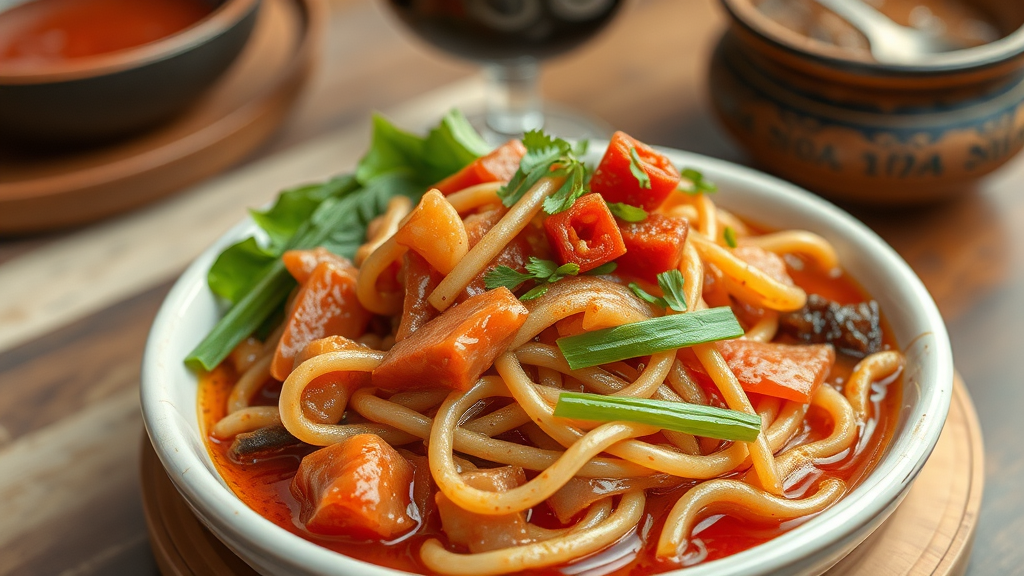
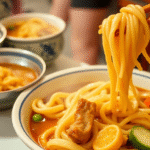

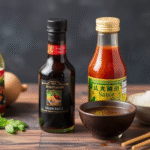

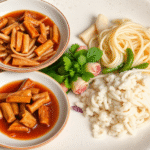
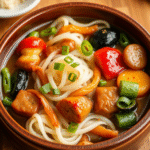
Leave a Reply